In the shadow of the Napoleonic era. Russian-Turkish war 1806 – 1812
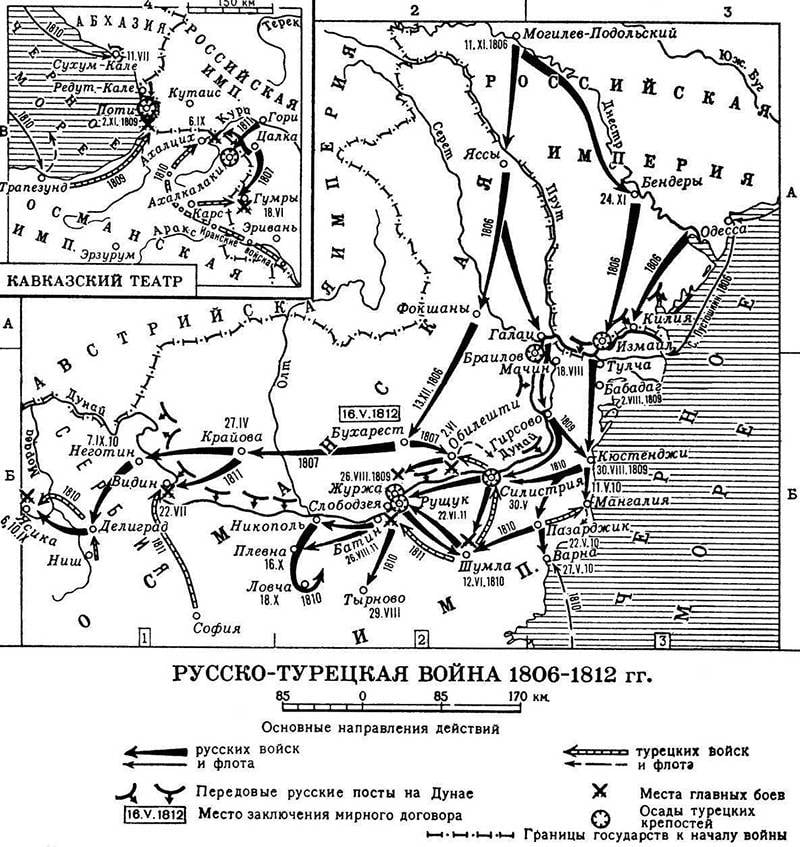
The beginning of the XNUMXth century abounded historical events - both in Russia and in Europe. Change of epochs, change of traditions, when some stereotypes, having flown from seemingly unshakable pedestals, were replaced by new ones. The frantic Marseillaise burst into the cozy silence of European palaces, knocking out the windows with unrestrained pressure, extinguishing the flames of the fireplace hearths of philosophers and dreamers. And then in the predawn darkness of a new historical period loomed seemingly to the enemies and associates of the gigantic - a short, stocky figure in an unchanged cocked hat.
Russia has not remained aloof from the whirlpool, the center of which was recently revolutionary, and now imperial France. For the huge, causing fears of many European rulers, a country stretching to the east of Poland, the turn of the XVIII – XIX centuries also became an important stage in the development of statehood. Some geopolitical tasks were successfully completed, others were just waiting in the wings. The confrontation with Sweden for supremacy in the eastern Baltic that lasted for almost a century ended in victory. Soon, in 1808 – 1809. as a result of the last Russian-Swedish war, Finland will be joined to Russia, and the northern neighbor will have to accept the irrevocable loss of the status of a great power. The question of the territorial affiliation of the Northern Pontic and Crimea was also positively resolved. The Ottoman Empire was finally expelled from these regions, and the problem of the Black Sea straits remained as a legacy to the successors of Catherine II. Three consecutive sections of Poland suffering from permanent riot completed the process of mastering the Dnieper region, expanding the borders of the empire in the west.
Foreign trade expanded through the newly acquired and built ports, and above all the trade in raw materials. England was the absolute monopolist in Russia's foreign economic relations with Europe. Misty Albion at the beginning, and in the first quarter of the XIX century, had a developed production of various industrial goods, which required abundant raw materials. In the Russian aristocratic environment, along with the continued influence of French culture, Anglomania is becoming fashionable. The popularity of the country-workshop, along with its growing economic interests, largely influenced Russian politics during the era of the Napoleonic Wars. A significant role was played by the close family ties of the Russian court with numerous German monarchs of medium and even small hands.
Naturally, under such objective and subjective circumstances, Russia could not stand aside from the processes that reformatted Europe. The question was in the degree of participation, and the emperor Alexander and his entourage were going to participate in them in the most direct way. The first campaign in the reign of the young king led to the defeat at Austerlitz and once again showed what the Austrian allies are worth. The news of the brilliant victory of Napoleon impressed not only the allies of the Third Anti-French Coalition, but also caused a response to Turkey far from the scene. On Sultan Selim III, the message of the defeat of the army of his two long-standing opponents made a strong and predictably favorable impression. Soon he ordered the grand vizier to consider the recognition of Napoleon as emperor and to stress in every possible way his ambition and favor before the French ambassador to Istanbul, Fonton. In January, 1806 Selim III, in his official firman, recognized Napoleon for the imperial title and even conferred on him the title of padishah.
Diplomatic games
Simultaneously with the clear warming of Franco-Turkish relations (still quite recently, after the start of the Egyptian expedition, both countries were in a state of war), the diplomatic climate between Russia and Turkey began to deteriorate rapidly. In the east, force has always been respected, and, on the basis of this magnitude, the state authority of a country was formed. Of course, after Austerlitz, the military "actions" of the empire in the eyes of the Turkish leadership fell somewhat. As early as April 1806, the grand vizier expressed this position in the demand for Russian Ambassador A. Ya. Italinsky to reduce the number of Russian ships passing through the straits. In the fall, the Turks announced a ban on the passage of military ships under the St. Andrew’s flag through the Bosphorus and the Dardanelles, while the passage of merchant ships was subject to significant restrictions.
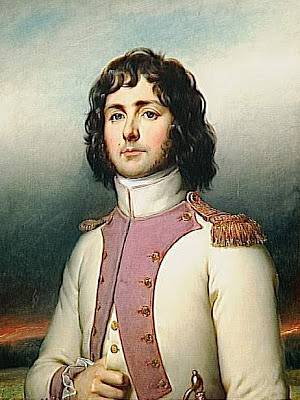
Each essentially hostile Turkish foreign policy action was synchronously linked to the successes of the French troops in Europe. In October 1806, Prussian troops were defeated at Jena and Auerstedt. Berlin and Warsaw were taken, and soon Napoleon was already directly at the Russian borders. All these successes strengthened the confidence of the Turkish leadership in the correct choice of friends and partners. Soon a new French ambassador, General Horace Francois Bastien Sebastiani de La Porte, arrived in Istanbul, whose task was to strengthen French military and political successes by concluding an alliance treaty between France and Turkey. Of course, such an agreement had a pronounced anti-Russian direction.
With the advent of this unfounded diplomat at the sultan's court, the Russian-French diplomatic struggle for Turkey’s foreign policy orientation, which had subsided for a while, resumed. Sebastiani was keen on various promises in such cases: he suggested carefully listening to his Turks to restore the Ottoman Empire within the borders preceding the Kyuchuk-Kaynardzhi peace treaty, that is, to roll back the situation in fact by the middle of the XVIII century. The opportunity to return Ochakov, the Crimea and others lost as a result of the last two Russian-Turkish wars, the land looked very tempting. The energetic proposals of the energetic Sebastiani were reinforced by promises to help military advisers and provide support in a financially traditional matter for Turkey.
It was successfully used by the general and the Serb uprising that broke out in 1804 under the leadership of Karageorgij. Despite the fact that the rebels asked for help in St. Petersburg, their request was met more than coolly: indicating that the petitions should be addressed first to Istanbul, to their own ruler. The king did not want to quarrel with the Turks on the eve of the war with Napoleon. Nevertheless, Sebastiani was able to convince the Sultan that it was the Russians who were helping the Serbs in the partisan war in the Balkans. Diplomatic combinations skillfully defeated by the French yielded their generous fruits - for the Turks, Russia's role in the Serbian issue was an old and painful pet peeler, which Sebastiani skillfully pressed.
The frightening Russian giant in the light of recent events seemed to the Turks not so powerful anymore, and besides, a short historical and political memory was a common diagnosis among the top leaders of the Ottoman Empire. Emboldened, Selim III took a consistent course toward a war with Russia. In the fall of 1806, Istanbul went to a direct violation of the treaty with St. Petersburg, unilaterally dismissing the rulers of Moldavia and Wallachia. Under the diplomatic protocol, this procedure could take place only through the court and in agreement with the Russian side. The dismissal of the rulers Muruzi and Ypsilanti was a direct non-observance of the previously reached agreements, which could not be released on the brakes. The situation was complicated by the fact that Alexander I could not respond to such a violation, but at that moment the emperor was connected with the war with Napoleon. In order to somehow respond to the Turkish demarches, official Petersburg finally decided to help Karageorgia more substantial than excuses about appealing to his own ruler and so on, "well, you are holding out there." 24 September 1806 d. Alexander I signed a decree ordering to send to the Serbs 18 thousands of gold pieces of gold and weapon.
The situation continued to confidently slide towards a military solution to the problem. Along with the prohibitions and restrictions related to the passage of Russian ships through the straits, Turkey, under the leadership of French engineers, at an accelerated pace began to reconstruct and strengthen its fortresses along the Dniester bordering Russia. Closer to the Danube and the contingents of the Turkish troops. Observing the openly hostile actions of the Ottoman Empire, Russia was forced to present an ultimatum demanding the restoration of the rights of the rulers of Wallachia and Moldavia and the strict observance of previous agreements. The ultimatum was not a trivial way to shake the air, moreover, it was well known that only something more significant than a document could influence the Turks, although it was written in strict terms: part of the Russian southern army advanced just in case to the Dniester.
The energy of General Sebastiyani circulated in the highest government circles of the Ottoman Empire under great tension - the ambassador, promising all kinds of help and assistance from France, pushed Turkey into war with Russia. It cannot be said that Selim III and his entourage suffered from excessive peace-lovingness - in Istanbul, they remembered very well all the bruises and blows stronger than those received from the Russians. The reaction to the ultimatum of Petersburg was characteristic: it was simply left unanswered. The level of tension between the two empires has risen by yet another wide division. The space for maneuver on the diplomatic front was rapidly decreasing. Decisive action was already required.
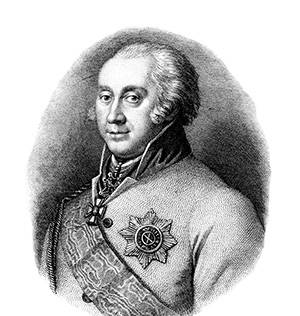
4 October 1806, the emperor Alexander I signed an order: the commander of the Russian southern army, General of cavalry, Ivan Ivanovich Michelson was ordered to force the Dniester and take Moldovan principalities under the control of the troops. General Mikhelson was an old warrior who participated in many companies (for example, in the Seven-Year and Russian-Swedish War). But he especially distinguished himself during the suppression of the Pugachev uprising, as evidenced by the Order of St. George of the 3 degree and the golden sword with diamonds for bravery. By the end of November 1806, the Russian troops occupied Moldova and Wallachia. At the same time, part of the units entrusted to him was withdrawn from submission and transferred to Prussia, so that Michelson had no more than 40 thousands of soldiers by that period.
Skillfully manipulating the moods of the Turkish top, playing on their desire to take revenge and at the same time giving out generous promises, Sebastiani managed to turn the situation around so as to present Russia as an aggressor. Say, we are here the very love of peace: think, removed some princes, banned the passage of ships and ignore diplomatic notes. And they, in response to the Danube principalities, dared to introduce troops. At the insistence of the French ambassador, 18 December 1806 Sultan Selim III declared war against the Russian Empire. At this stage, France’s plans to plunge its strongest land enemy into yet another conflict were completely crowned with success. Formally allied Russian British diplomacy, traditionally possessing strong positions in Istanbul, had no effect on what was happening.
Forces and plans of the opposing sides
St. Petersburg did not expect such a tough reaction from Turkey. It was believed that the maneuvers of the Michelson army would be more than a weighty argument to bring more and more arrogant Ottomans to the proper feelings. Having concentrated its main efforts in the western direction, Russia disposed of very modest ground forces in the south. The total number of the Turkish army at the beginning of the war reached 266 thousand regular troops and more than 60 thousand irregular. Of course, at the future theater of war there was only a part of these impressive forces. The Turkish fleet was very good in technical and quite significant in quantitative terms. It consisted of 15 battleships, most of them beautifully built in France, 10 frigates, 18 corvettes and more than a hundred ships of other classes. Main forces fleet were concentrated in the Sea of Marmara.
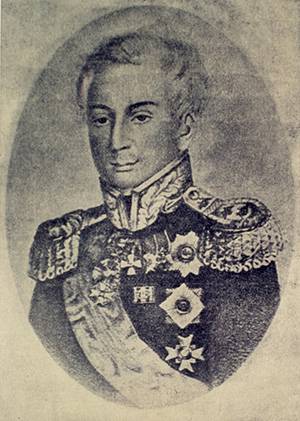
The Russian Black Sea Fleet after a period of glorious Ushakov victories was in a somewhat neglected state. In the military environment, the then chief commander of the Black Sea Fleet and the future minister of the sea, Vice Admiral de Traversay, were considered the culprit of such a situation. A Frenchman by birth, Jean Baptiste Prevost de Sansac, Marquis de Traversay was a prominent representative of the royalist emigration, who preferred to leave his homeland during the revolutionary turmoil. Descended from a family with naval traditions, Marquis in the 90-s. XVIII century entered the Russian service on the recommendation of Admiral Prince of Nassau-Siegen. By the beginning of the war with Turkey, the Black Sea Fleet under his command consisted of 6 battleships, 5 frigates, 2 brigs and around 50 gunboats.
The most important strategic factor in the naval component of the future war and the circumstance that alleviated the situation regarding the small Black Sea fleet was the presence of a squadron under the command of Admiral Senyavin at the beginning of the war in the Mediterranean. Directed here in the complex of measures taken by Russia in the framework of the Third Anti-French Coalition, the Senyavin ship grouping had to act against the naval forces of France and its allies. The operational base for the Russian ships was the Ionian Islands. Senyavin's forces were impressive enough: 16 battleships, 7 frigates, 7 corvettes, 7 brigs and some 40 of other ships. It was this composition that the Mediterranean squadron had after the arrival of the detachment of Captain Commander I. A. Ignatiev from the Baltic — reinforcements that Senyavin received at the beginning of hostilities. There was also an expeditionary corps of ground forces stationed in the Ionian Islands, and 3 thousand armed militias from the local population.
The Balkans traditionally remained the main land theater in the upcoming war. In the context of the ongoing war with Napoleon, the Russian command could concentrate rather limited forces in this area. After repeated cuts, the southern, or, as it now began to be called, the Moldavian army under the command of General Mikhelson consisted of no more than 40 thousand men with 144 guns. The Turks had around the Danube, according to various estimates, from 50 to 80 thousand people. Moreover, this number included the garrisons of Turkish fortresses and strongholds on the Danube.
Transition of the Dniester and the failed Bosphorus landing
In November 1806, the Russian troops crossed the Dniester and began to systematically occupy cities and fortresses. The fortresses of Iasi, Bender, Akkerman, Galati were surrendered by the Turks without any resistance. December 12 detachment of General Miloradovich was taken Bucharest. Formally, the war has not yet been declared, and the Turks preferred not to get involved in open clashes. On the left bank of the Danube, the Ottomans now controlled only three strong enough fortresses: Ishmael, Zurzha and Brailov. The events of Russia were due to direct violations by the Turkish side of the whole complex of agreements reached earlier, and actions unconditionally falling under the category of "hostile". In fact, Turkey found itself in a skillfully arranged diplomatic trap: first, the French increased the level of hostility towards the Russians with all their forces and means, and when they could no longer confine themselves to “concern and regret,” they were declared “aggressor” without shame.
The British consul did not show the traditional zeal, unable to resist the energy of Sebastiani, and soon left Istanbul, moving to the squadron of Admiral Dukworth, cruising in the Aegean Sea. After the official declaration of the war that followed 18 on December 1806, it turned out that the Ottoman Empire, despite underlined militancy and severely frowning eyebrows of the upper echelons of power, is much worse prepared for hostilities than Russia, which all forces were sent to war with Napoleon, and which considered the Balkan direction exclusively as an auxiliary. Turkey, although it pulled the troops to the Danube, but they were dispersed along the river and in separate garrisons.
After enjoying plenty of proclaiming menacing and meaningful speeches, Sultan Selim III instructed the grand vizier to assemble an army from the scattered segments and concentrate it on Shumla. The army of the Bosnian pasha, who continued to carry out an unsuccessful operation against the rebel Serbs under the leadership of Karageorgij, was brought to 20 thousand people. Pasha received a suggestion from Istanbul to act more decisively and mercilessly, especially since the Serbs 30 in November 1806 managed to liberate Belgrade.
The concentration of the main forces of the Turks in the Balkans was slow. General Mikhelson was informed that there would be no significant reinforcements due to the ongoing hostilities with the French. Mikhelson received an order to get up to winter apartments and limit defense.
Despite the obvious deterioration of relations with Turkey, the escalation of tension that made the war almost inevitable, the Russian command did not have a general plan of military actions, and it had to be developed literally on the knee. The war was actually on the threshold, while the higher circles were only arguing about goals and methods. Among the plans being worked out was the uprising in Greece, in order to support the insurgents from the sea by the squadron Senyavin, to attack together with them on Istanbul. A draft of the forced creation of the Balkan states loyal to Russia was also considered in order to isolate Turkey from Napoleonic influence with their help. How these projecting ideas in the conditions of a catastrophic shortage of time and rapidly deteriorating situation would be carried out is a question. Only in January, 1807, in the third month of the war, was the plan developed by the naval minister P.V. Chichagov. The essence of it was reduced to three points. The first is the breakthrough of the Black Sea Fleet to the Bosphorus and the landing of an assault force of at least 15 thousand people. The second is the breakthrough of the Mediterranean squadron Senyavin together with the allied British through the Dardanelles into the Sea of Marmara and the destruction of the Turkish fleet. Third, by their actions, the Danube army distracts the enemy’s attention from Istanbul.
Chichagov's plan did not carry in itself fundamentally unrealizable moments and was quite feasible, if not for one “but”. The main task in this plan was put before the Black Sea Fleet, but he did not have enough forces and means for that. After the reign of Catherine II, the Black Sea Fleet ceased to pay due attention, it was greatly weakened - both quantitatively and qualitatively. From 1800, his chief commander was Vilim Fondezin, who did not manifest himself in the Russian-Swedish 1788 – 1790 war in the best way. Since 1802, the Marquis de Traverse has been appointed to this post. The activity of these naval commanders in relation to the forces entrusted to them soon made itself felt. For example, in the state, the Black Sea Fleet was supposed to have a battleship 21, and in fact had only six.
21 January 1807 de Traversay receives an order to prepare for a landing operation in the Bosphorus. At first, the Frenchman cheerfully reported to St. Petersburg that everything was already quite ready, and the vehicles available would take on at least 17 thousand people. And yet, obviously, the Marquis was able to look at things from a different angle and more soberly assess his own achievements, since already on February 12 he reported to Chichagov that supposedly the regiments intended for the landing were not fully equipped, there were many recruits, and there are not enough officers. Based on this, it is impossible to land at the Bosphorus. In fact, de Traversay simply could not find a sufficient number of transport crew. Initially unsubscribing his superiors about the positive state of affairs, the Marquis now smoothly shifted the blame for his embarrassment onto the mighty shoulders of the land command. The Bosphorus operation was terminated at the preparatory stage, and, most likely, the main factor for the cancellation was still not technical, but human. For example, the actions of the squadron of Senyavin, which operated in the Mediterranean, were bold and decisive (this topic deserves a separate presentation).
Peace offers
In the meantime, since the spring of 1807, hostilities have been conducted slowly on the Danube. From early March, General Meyendorff’s corps began the siege of Ishmael, which lasted unsuccessfully until the end of July. Skirmishes occasionally occurred between both armies, but the Turks still could not gather their troops into an attack fist, while the compact Moldavian army continued to remain on the defensive. The war in Europe continued: at the beginning of 1807, there was a bloody battle at Preussisch-Eylau, ending in a draw. The initiative remained in the hands of Napoleon, and in the next battle of Friedland 14 on July 1807, the Russian army under the command of General L. L. Bennigsen was defeated.
Even before this event, Alexander I believed that it was too expensive and dangerous for Russia to be in a position of war with two opponents at once. Therefore, the emperor decided to offer the Turks peace on terms acceptable to both parties. In order to probe the ground for negotiations, an official of the Ministry of Foreign Affairs, French émigré Charles Andre Pozzo di Borgo, was sent to Senyavin’s squadron. The diplomat carried with him an extensive instruction signed by the king. The Russian proposals did not carry any radical and impracticable demands, and it was quite possible to agree with them. The Turks were asked to return to the observance of previous treaties and conventions - primarily on the straits. Russia agreed to withdraw its troops from Moldavia and Wallachia, leaving the garrisons only in the Khotyn and Bendery fortresses as a guarantee. However, these garrisons there should have remained only during the war with France. Pozzo di Borgo was instructed to agree with the Turks on joint actions to expel the French from Dalmatia. Moreover, the Turks didn’t have to do anything - just let Russian troops pass through their territory. In Serbia, they did not forget about Serbs: Pozzo di Borgo had to achieve for them the right to choose their own prince with the subsequent approval of his sultan.
On May 12, a Russian diplomat arrived on Tenedos Island, controlled by the Senyavins. The next day, the captive Turks were sent to Kapudan Pasha (commander of the fleet) along with a letter requesting that the Russian envoy be allowed to enter Istanbul. Admiral did not receive a response. He wrote two more letters of similar content - the result was the same. In fact, quite turbulent events were taking place in the Turkish capital, which somewhat prevented the leadership of the Omani Empire from concentrating on peace negotiations.
Military coup in Turkey
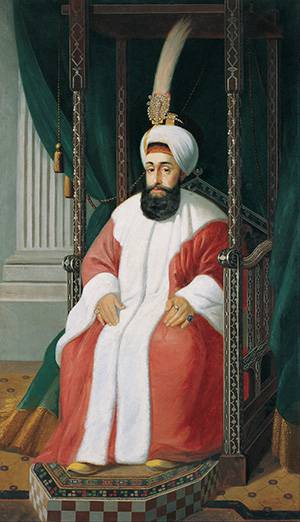
The Russian squadron managed to block the sea approaches to the Turkish capital so tightly that the supply of food there stopped completely. The bulk of the supply of Istanbul was carried out by waterways, and it was they who were almost completely cut. Tension gradually developed in the capital due to food shortages. Prices in the markets soared by several orders of magnitude. Even the garrison of Istanbul began to get trimmed rations. And in such a not very favorable situation, Sultan Selim III did not find a better occupation for himself, how to organize the reform of the Turkish army uniforms in the European manner. Sultan was a lover of everything European and, with the most active assistance of the French ambassador, General Sebastiani, even before the start of the war, he embarked on a set of reforms in the army, called the Nizam-i-Jedid (literally the New Order).
Not all innovations were enthusiastically accepted in the military environment, and the period of the adoption of a new uniform was not the best time. The Russian fleet in the most arrogant manner stood at the entrance to the Dardanelles, actually in the center of the empire, and its own naval forces, cowardly, in the opinion of the disgruntled citizens of the Sultan, hid in the Sea of Marmara. Irritation inappropriate at that time innovations grew into an open armed speech. 17 May 1807 The Istanbul garrison raised a rebellion, widely supported not only by the common people, but also by the clergy. Quickly catching the direction of the gusty wind of change, Kaymakam Pasha (the governor of the capital) Musa joined the rebels. The resistance in the sultan's palace was quickly suppressed: the 17 were killed by the entourage of Selim III, whose heads were solemnly carried through the streets. The ousted padishah and his brother Mahmud were imprisoned in a dungeon, and Selim III's cousin ascended to the throne, who now became Mustafa IV. The coup was actively supported in the provinces - the commanders of armies and fleets were quick to express their loyalty to the new ruler. The coup received ideological support from the supreme mufti, who declared Selim III the violator of the precepts of the Prophet Mahomet and therefore worthy of the death penalty. Nevertheless, the detached sultan was kept under arrest, but in the palace. (Subsequently, in 1808, when an attempt was made by a group of conspirators to free him, Selim was strangled by order of Mustafa IV).
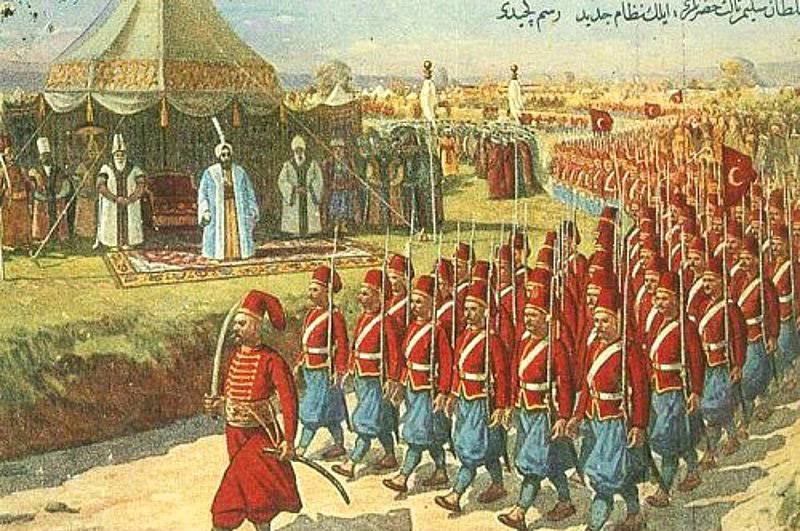
Despite the change of power in Istanbul, nothing systematically changed in relations between Russia and Turkey. 28 May Senyavin finally received a response to his messages, which unequivocally stated that "the sultan is busy," and is ready to receive the envoying only with a personal letter from the king with apologies. The Turks still had few battles, the young sultan’s entourage wanted to continue the war, because the situation in Istanbul itself was very unstable: the people directly demanded from their ruler to lift the blockade and resume the supply of food.
Truce - comma in war
The conclusion of the peace of Tilsit had a direct impact on the Balkan situation. According to one of its points, Russia was obliged to clear Moldova and Wallachia and return to Turkey "military booty." 12 August 1807 was a truce signed between the two sides in the town of Vylobodtsy. The fighting was stopped, and the Russian troops left their positions and began to withdraw. However, during the unhurried withdrawal of the army from the Danube principalities that began, its separate units were systematically attacked by irregular troops of the Turks. Such a situation was declared by Alexander I insulting to Russian weapons, and the Moldavian army returned to its previous positions, without starting combat actions. The Turkish command chose not to escalate the situation, and the positional confrontation of both armies continued on the Danube until March 1809.
Napoleon, to whom the very fact of Russia's non-interference in European affairs was important, did not particularly pay attention to the actual violation by Alexander I of one of the points of the Tilsit world. Perhaps unconditional consent to transfer control over the Bosphorus and the Dardanelles to Russia would be a good contribution to France in exchange for the loyalty of St. Petersburg, but Napoleon did not decide on such a categorical step. In 1807 – 1809 He offered the Russian side several options for partitioning the Ottoman Empire, but he was always evasive in relation to the straits. The emperor was ready to give the Bosphorus to Russia, and to keep the Dardanelles for himself, considering that possession of the Russians by both straits would mean an excessive concession for France. In the war in Europe and the Balkans there was a short lull. The fighting resumed only in 1809 - the Russian forces forced the Danube, and north, in Austria, the Vagram cannon soon rumbled.
Продолжение следует ...
Information